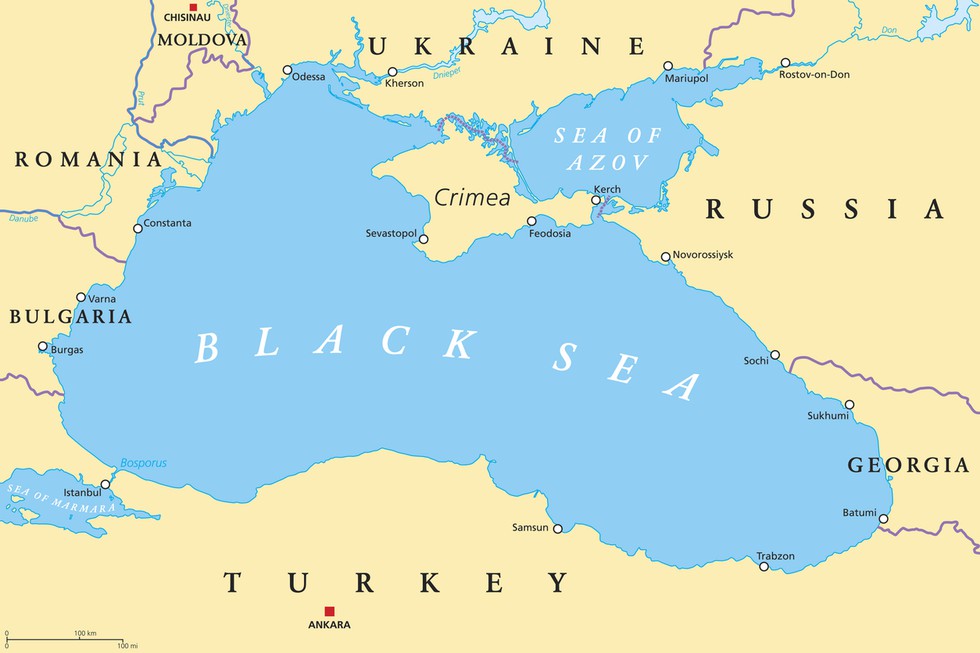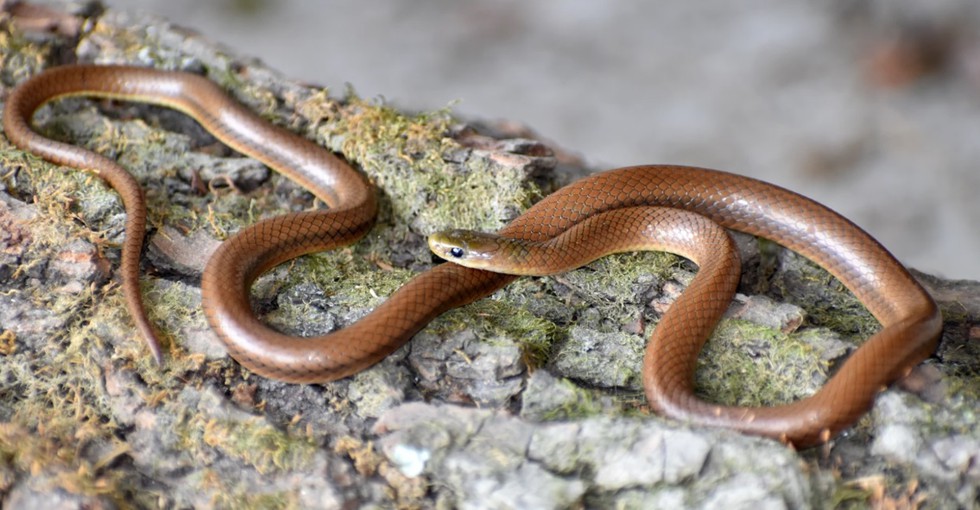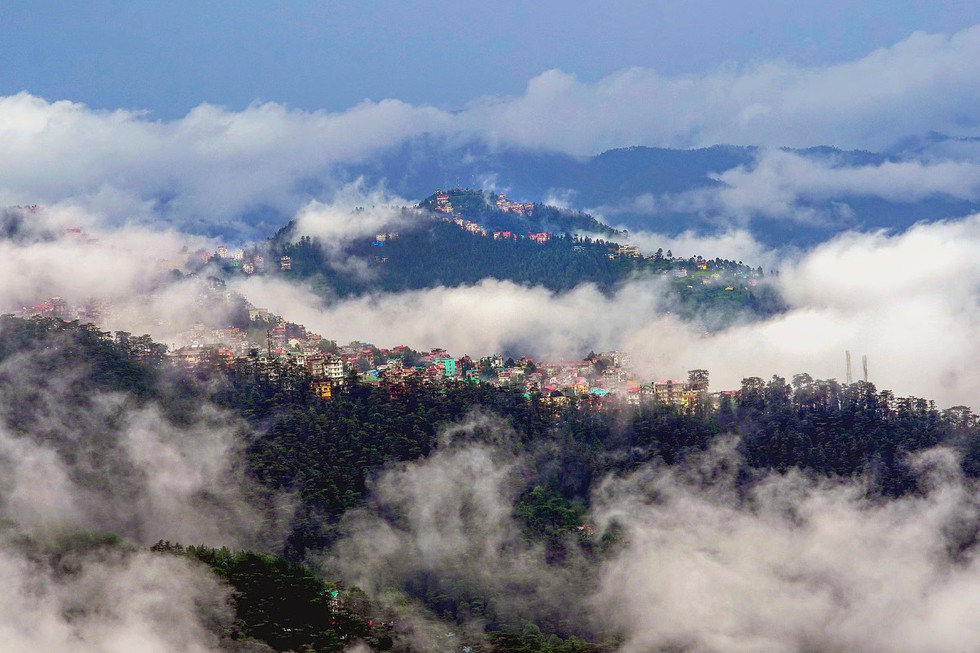1. What is Cornea?
The Ministry of Health and Family Welfare may amend the Transplantation of Human Organs and Tissues Act (THOTA), 1994, to facilitate retrieval of cornea from all Indian patients who die in hospitals, without consent from the family.

About Cornea:
- The cornea is the clear outer layer at the front of the eye.
- It covers the pupil (the opening at the center of the eye), iris (the colored part of the eye), and anterior chamber (the fluid-filled inside of the eye).
- The cornea’s main function is to refract, or bend light. The cornea is responsible for focusing most of the light that enters the eye.
- Its specific shape plays a key role in how your eyesight works and filters some ultraviolet (UV) rays.
- Except at its margins, the cornea contains no blood vessels, but it does contain many nerves and is very sensitive to pain or touch.
- Since there are no nutrient-supplying blood vessels in the cornea, tears and the aqueous humor (a watery fluid) in the anterior chamber provide the cornea with nutrients.
- As light passes through the cornea, it is partially refracted before reaching the lens.
- The curvatureof the cornea, which is spherical in infancy but changes with age, gives it its focusing power.
- When the curve becomes irregular, it causes a focusing defect called astigmatism, in which images appear elongated or distorted.
- Because corneas are the first line of defense for the surface of your eye, they’re also prone to injuries and damage.
- The cornea tends to repair itself quickly from minor abrasions.
- However, deeper abrasions may cause scars to form on the cornea, which causes the cornea to lose its transparency, leading to visual impairment.
2. Korowai Tribe
An Indian travel vlogger recently travelled deep into the jungles of Indonesia to meet the Korowai tribe, often referred to as a ‘human-eating’ tribe, and documented his experience on social media.

About Korowai Tribe:
- The Korowai tribe is a group of indigenous people who live in the southeastern part of Papua, Indonesia.
- The Korowai people have a deep connection to the forest, which they rely on for their survival. They hunt and gather food from the forest, including wild animals and plants.
- Until around 1975, Korowai had almost no contact with the outside world.
- They are famous for their treehouses.
- Built-in 8-15 meters off the ground, though there are houses that were up to 45 meters on a tall tree.
- The tribe has no particular hierarchy system, as the Korowai people treasure equality and harmony between them.
- They have been sensationalised in modern media for their association with cannibalism, a practice of eating human flesh.
- While it is believed that the tribe historically practised cannibalism as part of their spiritual and social beliefs, it has largely faded over time.
3. Key Facts about Black Sea
Russia's increased attacks on the Black Sea ports in Ukraine are delaying vital aid reaching Palestinians and stopping crucial grain supplies from being delivered to the global south, the British Prime Minister said recently.

About Black Sea:
- It is a large in land sea located at the southeastern extremity of Europe.
- It is one of the marginal seas of the Atlantic Ocean.
- It covers an area of approximately 436,000 square kilometers (168,000 square miles).
- It is bound to the west by the Balkan Peninsula in Southeastern Europe, to the east by the Caucasus, to the north by the East European Plains, and to the south by Anatolia of Western Asia.
- Bordering countries:
- The sea is bordered to the north by Russia and Ukraine, Turkey to the south, Bulgaria to the west, and Georgia to the east.
- Romania also has an opening to the Black Sea.
- The Crimean Peninsula extends into it from the north.
- Russia has the longest coastline on the sea (2,300 km), followed by Turkey (1,329 km) and Ukraine (1,282 km).
- It is connected with the Aegean Sea (an arm of the Mediterranean Sea) through the Bosporus Strait, the Sea of Marmara, and the Dardanelles Strait, and with the Sea of Azov by the Kerch Strait.
- Created when structural upheavals in Asia Minor split off the Caspian basin from the Mediterranean Sea, the Black Sea gradually became isolated; salinity is now less than half that of the world’s oceans.
- The Black Sea receives freshwater inflows all around the basin. It is a meeting point for many rivers, such as the Danube, Southern Bug, Dnieper, Rioni, and Dniester.
- It is the largest meromictic basin, which means the movement of water between the lower and upper layers of the Sea is rare.
- It is one of the world's largest anoxic basins, meaning it has areas with very little dissolved oxygen.
- Islands: It contains several islands, with the largest ones being Snake Island(Ukraine), Giresun Island (Turkey), and Ivan Island (Bulgaria).
4. Rajaji Tiger Reserve
Wildlife panel of the Union Environment Ministry has deferred nod to the National Highway Authority of India’s (NHAI) four-lane project, which was proposed to pass through Rajaji Tiger Reserve and Shivalik Elephant Reserve in Uttarakhand.

About Rajaji Tiger Reserve:
- It is spread over three districts of Uttarakhand: Haridwar, Dehradun, and Pauri Garhwal.
- It is located in the Shivalik range of the Himalayas and spread over 820 kms.
- It was named after the famous freedom fighter Rajgopalachari,popularly known as "Rajaji"
- Its location in a transition zone between temperate western Himalayas and central Himalayasenhances the species diversity.
- It forms an important part of the Terai-Arc landscape (7500 km) between the Yamuna River in the northwest and the Sharda River in the southeast.
- Vegetation: The area is covered with diverse forest types ranging from semi-evergreen to deciduousand from mixed broad-leaved to Terai grassland and has been classified as Indus-Ganges Monsoon Forest
- Flora: Some popular floras found in this park include: Rohini, Palash, Shisham, Sal, Sandan, Khair, Arjun, Baans, Semul, Chamaror, etc.
- Fauna: It has a sizeable population of Tigers and Asian Elephants. It is home to a variety of wild animals like Leopard, Jungle cat, Himalayan Black Bear, Sloth Bear, Striped Hyena, Goral, Sambar, Wild Pig, Spotted Deer, Barking Deer, etc.
5. Betelgeuse
Recent research has unveiled a surprising discovery about Betelgeuse that, the star's enigmatic brightening and dimming patterns may be caused by an unseen companion star.

About Betelgeuse:
- It is a red supergiant star that forms the left shoulder of the constellation of Orion.
- It is one of the brightest stars in the night sky and one of the largest stars ever discovered.
- The star is approximately 650 light-years from Earth.
- The star is nearing the end of its life span, and when it dies, the resulting explosion will be bright enough to see during the day for weeks.
- It is one of the largest known stars, measuring more than 700 million miles (1.2 billion kilometers) in diameter.
- It is known for its periodic dimming and brightening up.
- It exhibits two distinct pulsation patterns: a short-term cycle of about a year and a longer six-year cycle.
- The researchers concluded that the longer cycle, known as a long secondary period, is likely caused by the Betelbuddy's (companion star) orbital motion through Betelgeuse's surrounding dust.
What is Red supergiant star?
- A red giant forms after a star has run out of hydrogen fuel for nuclear fusion, and has begun the process of dying.
- They are evolved stars with masses between 10 and 25 times that of the Sun.
- A star classed as a supergiant may have a diameter several hundred times that of the Sun and a luminosity nearly 1,000,000 times as great.
- Supergiants are tenuous stars, and their lifetimes are probably only a few million years, extremely short on the scale of stellar evolution.
- These stars have cool extended atmospheres.
6. Clostridioides difficile bacteria
Researchers are developing the first successful vaccine against the highly contagious and difficult-to-treat Clostridioides difficile bacteria, using the technology behind the revolutionary mRNA vaccines that tackled COVID-19.

About Clostridioides difficile bacteria:
- It is a bacterium that causes an infection of the colon, the longest part of the large intestine. Symptoms can range from diarrhea to life-threatening damage to the colon.
- Illness from C. difficile often occurs after using antibiotic medicines.
- It mostly affects older adults in hospitals or in long-term care settings. People not in care settings or hospitals also can get C. difficile infection.
- Symptoms
- Watery diarrhea, mild belly cramping and tenderness.
- People who have a severe C. difficile infection tend to lose too much bodily fluid, a condition called dehydration.
- difficile infection that is severe and sudden can cause the colon to become inflamed and get larger, called toxic megacolon.
- Transmission: It can be transmitted from patient to patient by the hands of health care workers.
- Roughly one-third of infected individuals will have recurrent infections.
- Treatment: Treatments include a lengthy course of strong antibiotics, which also kill off beneficial bacteria in the gut, and fecal transplants to deliver healthy bacteria.
7. Anguiculus dicaprioi
A team of scientists have discovered a new species of snake in the Western Himalayas, whom they have named after Hollywood star, Leonardo Di Caprio.

About Anguiculus dicaprioi :
- It is a member of the Colubridae, the largest family of snakes on the planet with 304 genera and 1,938 species.
- Features
- The new species has dozens of small-sized teeth.
- It grows around 22 inches and has a broad collar with small dark brown spots.
- It has a "robust skull", and a “steeply domed snout”.
- This species lives at heights of around 6,000 feet above sea level.
- Researchers suggested the common name ‘DiCaprio’s Himalayan snake’.
- Distribution: The snake is found in Chamba, Kullu and Shimla in Himachal Pradesh, Nainital in Uttarakhand and Chitwan National Park in Nepal.
- These snakes are mostly active from late May to August and are not seen at other times of the year.
What are Colubrid Snakes?
- A colubrid is any of the numerous, diverse, largely nonvenomous snakes that comprise the reptile family Colubridae.
- The Colubridae family is one of the largest snake families, consisting of over 1,800 species.
- They are characterized by the absence of hind limbs.
- They are found in various regions around the world, except for Antarctica and some remote oceanic islands.
- Habitats: They inhabit a wide range of environments, including forests, grasslands, deserts, wetlands, and aquatic habitats.
- Venom: The majority of colubrid snakes are non-venomous.
- Among well-known colubrids are king snakes, watersnakes, milk snakes, gartersnakes, racers, ratsnakes, ring-necked snakes, hog-nosed snakes, and the venomous boomslangs.
8. Space Docking Experiment (SPADEX)
Recently, Hyderabad-based company handed over two 400 kg class satellites to ISRO, which will be part of the Space Docking Experiment planned by the space agency later this year.

About Space Docking Experiment (SPADEX):
- It is one of ISRO's most significant steps towards developing autonomous docking technology.
- The mission involves two vehicles—‘Chaser’ and the ‘Target’—coming together and connecting in space.
- Docking systems allow two spacecraft to connect in orbit, enabling critical operations like assembling space stations, refueling, or transferring astronauts and cargo.
- It will also test how well the combined spacecraft maintains stability and control after docking, ensuring smooth operations for future missions.
- India’s SPADEX experiment is unique because it focuses on developing indigenous, scalable, and cost-effective docking technology.
- This experiment involves two spacecraft docking autonomously in orbit, demonstrating precision, navigation, and control capabilities critical for future missions.
- SPADEX is designed to serve a wide range of spacecraft sizes and mission objectives, including potential collaborations for building space stations or deep space exploration,”
- The history of docking systems dates back to the Cold War when the Soviet Union achieved the first successful docking in space.
- On October 30, 1967, the Soviets completed the historic docking of Kosmos 186 and *Kosmos 188—the first fully automated docking between two unmanned spacecraft.
- This paved the way for later space exploration efforts, including long-term stays aboard space stations.
- Significance: It is key to achieving India's long-term space exploration goals, including manned spaceflight, satellite maintenance, and future space station construction.
9. What is Cloud chamber?
India is establishing a first-of-its-kind cloud chamber at the Indian Institute of Tropical Meteorology (IITM), Pune.

About Cloud Chamber:
- A cloud chamber is a scientific apparatus that mimics the conditions required for cloud formation.
- It resembles a closed cylindrical or tubular drum, inside which water vapour, aerosols, etc. are injected.
- Under the desired humidity and temperature inside this chamber, a cloud can develop.
- India is building a cloud chamber with convection properties, as required to study Indian monsoon clouds. Globally, there are only a handful of convective cloud chambers.
- Objective: The objective of establishing a convective cloud chamber is to gain a better understanding of cloud physics under conditions commonly affecting Indian weather systems. Thereafter, this knowledge can be used for strategic planning of weather modification.
- The Pune facility will allow scientists to study the seed particles that form cloud droplets or ice particles in a sustained manner.
- Cloud physics basically involves the study of cloud behaviour during normal and extreme conditions; intra-particle interactions inside a cloud; the formation of rain droplets and ice particles; the influence of moisture added into the atmosphere due to cyclones or low pressure systems; and interactions between different cloud layers, among others.
- Significance: Scientists will have the flexibility to tailor physical and atmospheric parameters to suit environmental requirements that influence the Indian weather and climate.


























































































































































.png)
.png)
.png)
.png)
.png)


.png)
.png)
.png)





.png)
.png)






.png)
.png)
.png)
.png)
.png)
.png)
.png)
.png)
.png)

.png)







.png)
.png)


.png)
.png)
.png)


.png)

.png)
.png)





.jpg)

.png)
.png)


.png)

.png)
.png)
.png)

.jpg)

.jpg)


.png)

.png)
.png)
.png)
.png)
.png)
.png)
.png)
.png)
.png)
.png)




.png)

.png)





.png)
.png)
.png)
.png)
.png)
.png)
.png)
.png)
.png)
.png)
.jpg)
.jpg)

.png)
.png)
.png)
.png)
.png)
.png)
.png)
.png)
.png)
.png)
.png)
.png)
.png)
.png)
.png)
.png)
.png)
.png)
.png)
.png)
.png)
.png)



.png)
.png)

.jpg)
.jpg)


.jpg)
.jpg)
.jpg)
.jpg)
.jpg)

.jpg)








.jpg)
.jpg)
.jpg)
.jpg)
.jpg)

















.jpg)
.jpg)







.jpg)


















.jpg)
.jpg)






























































































.jpg)
.jpg)


























.jpg)

.jpg)










.jpg)








.jpg)




.jpg)










.jpg)


















.jpg)












































.jpg)














.jpg)
.jpg)
.jpg)





.jpg)

.jpg)
.jpg)





































































.jpg)


































.jpg)
.jpg)
















































.jpg)












.jpg)


.jpg)




.jpg)
.jpg)
.jpg)

.jpg)
.jpg)
.jpg)
.jpg)

.jpg)
.jpg)
.jpg)

.jpg)
.jpg)
.jpg)
.jpg)
.jpg)
.jpg)
.jpg)
.jpg)

.jpg)


.jpg)
.jpg)
.jpg)
.jpg)
.jpg)
.jpg)
.jpg)
.jpg)
.jpg)
.jpg)











.jpg)
.jpg)





.jpg)
.jpg)
.jpg)
























.jpg)
























.jpg)









.jpg)
.jpg)







.jpg)
.jpg)









































.jpg)
.jpg)
.jpg)
.jpg)
.jpg)

.jpg)
.jpg)
.jpg)
.jpg)
.jpg)


.jpg)
.jpg)
.jpg)
.jpg)
.jpg)

.jpg)
.jpg)
.jpg)
.jpg)
.jpg)
.jpg)
.jpg)
.jpg)
.jpg)
.jpg)
.png)

.png)
.png)

.png)
.png)
.png)
.png)


.jpg)
.jpg)

.jpg)
.jpg)
.jpg)

.png)
.png)
.png)
.png)
.png)
.png)
.png)

.png)
.png)
.png)
.png)
.png)
.png)
.png)
.png)
.png)
.png)





































































-min.png)



.png)




.png)








































